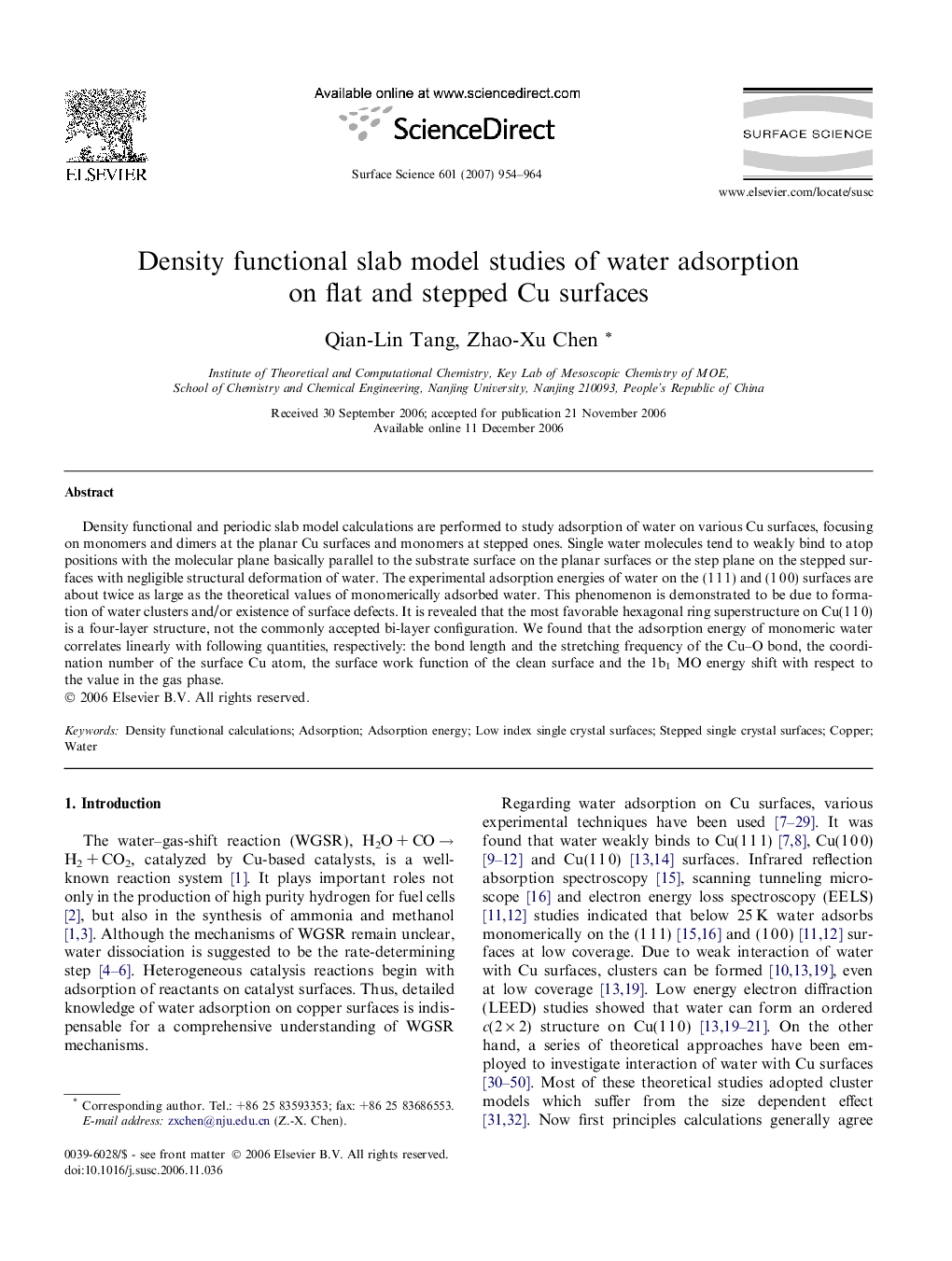| Article ID | Journal | Published Year | Pages | File Type |
|---|---|---|---|---|
| 5425201 | Surface Science | 2007 | 11 Pages |
Density functional and periodic slab model calculations are performed to study adsorption of water on various Cu surfaces, focusing on monomers and dimers at the planar Cu surfaces and monomers at stepped ones. Single water molecules tend to weakly bind to atop positions with the molecular plane basically parallel to the substrate surface on the planar surfaces or the step plane on the stepped surfaces with negligible structural deformation of water. The experimental adsorption energies of water on the (1Â 1Â 1) and (1Â 0Â 0) surfaces are about twice as large as the theoretical values of monomerically adsorbed water. This phenomenon is demonstrated to be due to formation of water clusters and/or existence of surface defects. It is revealed that the most favorable hexagonal ring superstructure on Cu(1Â 1Â 0) is a four-layer structure, not the commonly accepted bi-layer configuration. We found that the adsorption energy of monomeric water correlates linearly with following quantities, respectively: the bond length and the stretching frequency of the Cu-O bond, the coordination number of the surface Cu atom, the surface work function of the clean surface and the 1b1 MO energy shift with respect to the value in the gas phase.
